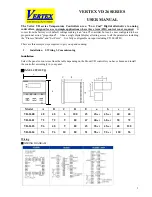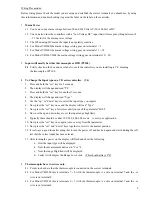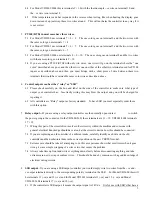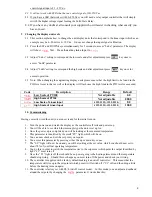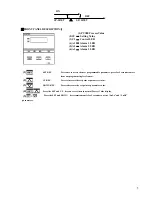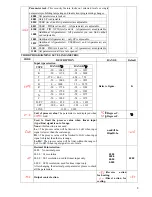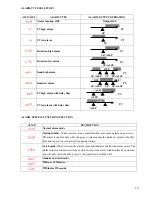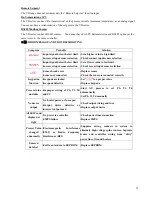
4.4 For Model VD2603/2604 this is terminals 9 + 10 with the thermove wire on terminal 10 and
the –ve wire is on terminal 9.
4.5 If the temperature reads but responds in the reverse when testing, like when heating the display goes
down instead of up just swap these two wires around. This will not harm the controller in any way if it
is not correct.
5
PT100 (RTD) in most cases have three wires.
5.1 For Model VD2600 use terminals 7 + 8 + 9. The one color goes on terminal 9 and the two wires with
the same color go on terminals 7 + 8
5.2 For Model VD2601 use terminals 5 + 6 + 7. The one color goes on terminal 5 and the two wires with
the same color go on terminals 6 + 7
5.3 For Model VD2603/2604 use terminals 8 + 9 + 10. The one color goes on terminal 8 and the two wires
with the same color go on terminals 9 + 10
5.4 If you are using a PT100 (RTD) with only two wires, one wire will go on the terminal where the “one
color” described above goes, and the other wire one on either of the other two terminals used for PT100
inputs as described above and then you must bridge with a short piece of wire between these two
terminals that would have carried the same color wire as described above.
6
Control outputs can be either “relay” or “SSR”
6.1 Please check carefully on the box and label on the side of the controller to make sure what type of
output your controller has. Incorrectly wiring this may blow the output and you will be charged for
repairing it.
6.2 All controllers are “Relay” output as factory standard. To have SSR you must especially order them
with this option.
7
Relay output....
If you are using a relay output controller use the normally open contact to switch
the power going to the contactor. On the VD2600/2601 these terminals are 11 + 12, VD2603/2604 terminals
17 + 18
7.1 Wiring this part of the circuit often involves other circuitry within the machine and someone with
general electrical knowledge should have a look at the circuit to decide how this should be connected.
7.2 If you are replacing an old controller of a different make, carefully identify each wire on the old
controller and then substitute them in the correct position on the new VERTEX model.
7.3 Extreme care should be taken if attempting to do this as experience shows that most times when it goes
wrong it was a simple swapping of a wire or two that causes the problem.
7.4 Always take time up front and write everything down clearly before disconnecting anything and take
extreme care not to swap or confuse wires. This should be done by someone with a good knowledge of
electrical wiring circuits.
8
SSR output
...If you are using a SSR output controller you would simply wire two wires from the +ve and -
ve output terminals directly to the corresponding polarity terminal on the SSR. For Model VD2600 this will
be terminals 11 (-ve) and 12 (+ve) and for Model VD2601 terminals 11 (-ve) and 12 (+ ve) and Model
VD2603/2604 terminals 17 (+ve) and 18 (-ve)
3
8.1 If the controller is SSR output, it means the output signal is 24 Vdc. It is for use with SSR’s that have a

